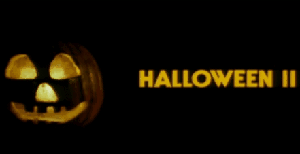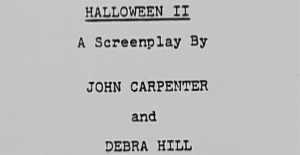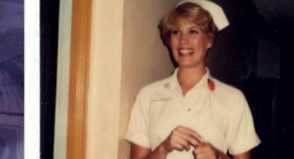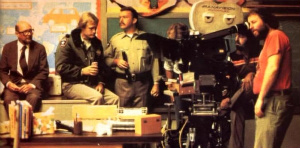
Director: Rick Rosenthal
Writers: John Carpenter, Debra Hill
Starring: Donald Pleasence, Jamie Lee Curtis, Lance Guest, Dick Warlock
Rating: R (USA), 18 (UK), R (Australia)
Despite the final shots of Halloween featuring the film’s menacing antagonist, Michael Myers, seemingly surviving the wrath of his nemesis, Dr. Sam Loomis, the filmmakers had no intention of producing a sequel. John Carpenter had several other projects he intended to pursue and was conscious of being typecast as a horror director. In 1978, sequels were not as commonplace as they would become in the eighties, with only a few extremely successful features producing follow ups (such as Exorcist 2: The Heretic, Damien: The Omen 2, Dawn of the Dead). And so once the cameras stopped rolling, all those involved moved on with their lives. 1980 would see countless imitators scoring at the box office while Halloween‘s star, Jamie Lee Curtis, became the genre’s scream queen with popular roles in Prom Night and Terror Train. But the unexpected success of the movie caused the producers, Irwin Yablans and Moustapha Akkad, to consider a sequel and approached Carpenter, who at the time was editing his latest horror, The Fog, about the possibility of writing and directing Halloween 2. Whereas the first film had been conceived on a mere $325,000, the second would boast a far substantial budget of $2.5m and both Yablans and Akkad were determined to repeat their previous success.
The genre had changed considerably in the three years since Halloween had been released. Atmospheric and slow-burning thrillers no longer appealed to young audiences in the wake of the phenomenal impact that Friday the 13th had caused in the summer of 1980. Its gruesome special effects and generic characters appealed to cinemagoers who populated the drive-ins and late night double screenings and they soon demanded more. Carpenter had little interest in making the same movie again but he was bound by legal technicalities to make another film and faced a possible lawsuit if he refused. He finally relented and agreed to write the screenplay, once again collaborating with partner Debra Hill. The duo were unsure on how to continue and immediately began playing around with various ideas, including setting the action in a high-rise apartment building some years after the events of the first film, whilst they also flirted with the possibility of shooting in 3D, which had started to make a comeback with the western Comin’ at Ya!. Realising that the technical issues of producing such a feature would not only cause the budget to rise considerably but would also take too long to produce, Carpenter instead decided to set the story immediately after the events of the first film. Deciding not to direct himself, as he was prepping for his pet project Escape from New York, Carpenter approached long-time collaborator Tommy Lee Wallace, who seemed the ideal choice to carry the torch. Wallace, who had married Halloween actress Nancy Loomis, also suggested various possible scenarios for the story, including one which would feature Laurie moving away to a private college where she would be pursued by Michael, an idea which would be echoed seventeen years later with Halloween H20.

Both Carpenter and Hill felt that there was very little story left to explore and decided that this would be the last Halloween film. The screenplay began with a recap of the final events of the previous instalment, before continuing with a near-comatose Laurie being taken away to the local hospital as Loomis and the police discover the mutilated corpses of the various victims, including the sheriff’s daughter, Annie. Michael, meanwhile, makes his way to the nearby house of the elderly Mrs. Elrod where he would find another knife to slash through his victims. With few ideas and feeling low on inspiration, Carpenter was sat at his typewriter late one night with a six-pack of Budweiser and a severe case of writer’s block when he suddenly decided to add a new twist in an desperate attempt to keep the story from falling apart – he would reveal Laurie as Michael’s long-lost sister. The finale would see Loomis sacrificing his life in order to save Laurie by starting an inferno in the hospital and burning Michael alive. When he presented the script to Wallace he felt it was cheap, lacked inspiration and seemed too concerned with catering to the fans of Friday the 13th and similar slashers that it was inferior in every way to Halloween and so declined the chance to direct.
NBC had purchased the rights to Halloween to be screened on television but required that the film would need to fill a two-hour slot with commercials and so requested that Carpenter add some additional scenes to extend the running time. For these new scenes, he included references to Laurie and Michael’s blood ties that was intended to justify the new plot twist for the sequel. Whilst scouting for a director to helm the second feature, Carpenter happened across a twenty-six minute short called The Toyer, that had been shot in 1979 by a group of film students from the American Film Institute. Its director, Rick Rosenthal, was a native of New York who had initially majored in Economics and Government at Harvard before turning to filmmaking with a short black comedy entitled Moonface. Suitably impressed with The Toyer, Carpenter approached the young director with the opportunity to helm his first feature film. Rosenthal had been a great admirer of Halloween and was determined to create a worthy continuation that would be faithful in both style and atmosphere.

With both Loomis and Laurie once again the central protagonists, it was imperative that both Donald Pleasence and Jamie Lee Curtis returned to their significant roles, though the latter would be required to wear a wig as her hair had changed significantly in the three years since they had shot Halloween. The producers would also bring back several other actors from small roles, including Nancy Stephens (whom the director would later marry) and Charles Cyphers. For the role of Michael (referred to in the script as The Shape), actor Nick Castle had since turned his attention to directing (scoring his first blockbuster with 1984’s The Last Starfighter) and so Rosenthal hired stuntman Dick Warlock, who had arrived at his audition in the white mask before proceeding to stare at the directing in silence. Warlock was simultaneously working for Carpenter as Kurt Russell’s stunt double on Escape from New York and had worked on such renowned features as Rollerball, The Love Bug and Alfred Hitchcock’s swansong Family Plot. Many of the new cast members comprised of television stars under contract from Universal Studios, who would distribute the movie.
Shooting commenced on location at Morningside Hospital in Los Angeles and Pasadena Community Hospital, California, with the town centre sequences shot at Kersting Court at Sierra Madre Boulevard, Sierra Madre, California. Halloween 2 would heavily reference its predecessor from the opening shot, which would once again feature a jack-o’-lantern during the opening credits, this since accompanied by The Chordettes classic Mr. Sandman (which would later be reused in Halloween H20). Though Rosenthal paid homage to the first film, Carpenter was less than impressed with the results as he viewed the diallies and, feeling compelled to cater for the bloodthirty slasher fans who had turned Friday the 13th into a blockbuster, decided that once principal photography had been completed he would shoot addition segments that would be edited into the movie without Rosenthal’s knowledge or consent. Whereas the director had attempted to create suspense and three-dimensional characters, Carpenter was too preoccupied with the amount of blood and stunts that would be on display that he edited out various scenes of dialogue between nurses and added a few extra kill sequences.

The first of these was barely five minutes into the film, with Mrs. Elrod’s death immediately followed by the pointless slaughter of a teenage neighbour, Alice, who had phoned the police to report strange noises outside. The original version was for Mrs. Elrod’s screams to suddenly cut to the wail of a police siren as a car arrives outside the house as Laurie is taken away. The next scene for Carpenter to shoot featured a cameo by Warlock’s youngest son, Lance, who walks passed the camera with a radio as two nurses head towards a car. This was the only sequence that Carpenter shot himself that would not feature violence. The next part was a by-the-numbers stalking of Mr. Garrett, the hospital’s security guard who is subjected to the typical slasher red herrings including a cat jumping out from the shadows. A final added shot featured a hypodermic needle being pierced through a nurse’s eyeball (it is worth noting that another movie released the same year, Dead and Buried, featured a similar sequence, and that the script was penned by Carpenter’s old Dark Star friend, Dan O’Bannon). Perhaps the film’s most notorious sequence featured two lovers, Nurse Karen Bailey and Budd, who strip naked and climb into a hot tub, before Budd makes his way into the other room where he is quickly dispatched. Michael then turns up the heat and forces her head into the water where her face is severely burnt. This sequence attracted criticism due to the fact that the male’s death is rather uneventful whilst the female’s is slow and agonising and featuring gratuitous shots of her breasts. The actress, Pamela Susan Shoop, had demanded that the scene would involve a closed set but when it came time to film there were nineteen crew members present. To help ease the tension, Rosenthal suggested that everyone strip in order to make Shoop less self-conscious but unsurprisingly no one agreed.
Halloween 2 was released at 1,211 cinemas on October 30 1981 and would make a staggering $7,446,508 on its opening weekend. Succeeding in crushing the competition (Friday the 13th Part 2, My Bloody Valentine, The Prowler and The Burning were all released the same year), the movie eventually earned a domestic gross of $25,533,818. Unfortunately, whereas the praise for Halloween had been unanimous, critical opinion on the sequel was divided, with the negativity mainly focusing on the unnecessary gore and generic knife fodder. An alternative version of Halloween 2, which was faithful to Rosenthal’s original vision, has often been rumoured to be set for a commercial release, though sadly this at present remains unavailable. The success of the movie convinced the producers, if not the writers, that there was still life left in the franchise and that a second sequel was now inevitable.


12 Responses to HE CAME HOME pt.2 – Halloween 2 (1981)